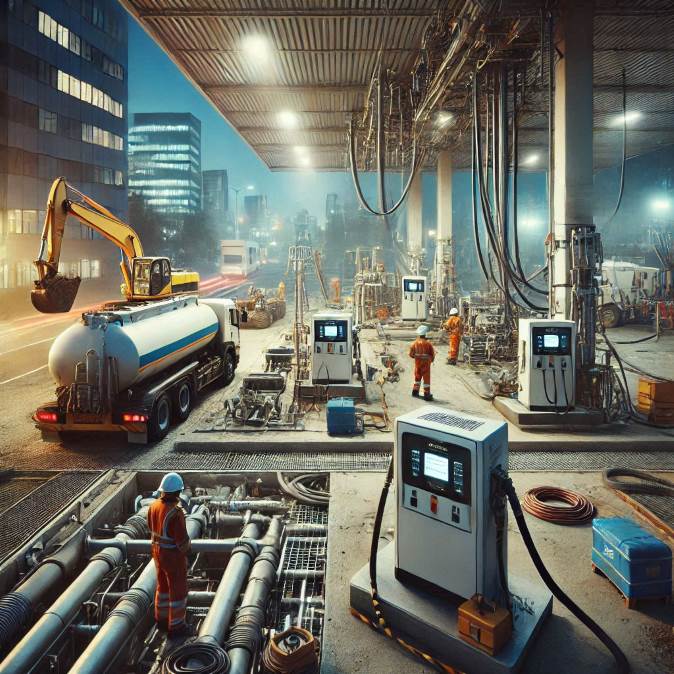Personal Gifts Energy Professionals Will Appreciate

Global energy demand keeps rising every year, which means thousands of professionals in oil, fuel, and energy fields work long hours to keep systems running. Their schedules often involve fieldwork, travel, and high pressure tasks. A thoughtful gift can brighten their day and remind them that their dedication matters. One meaningful idea is a customized item. A great example is a personal gift with name (persoonlijk cadeau met naam). This pairing helps readers understand both versions clearly.
Energy professionals value tools or keepsakes that feel useful and personal. That is why items with custom details stand out. A simple object becomes more special with a name or message engraved on it which makes the gesture sincere and memorable. Below is a list of gift ideas that work well for engineers, technicians, analysts, and workers in the fuel or oil sector.
1. Customized Safety Gear
Safety is essential in the oil and energy industry. Workers rely on durable gear every day. A personalized hard hat, flashlight, or reflective jacket can be both practical and meaningful. It shows that the giver understands the demands of their job. These items also last long, making them perfect for regular use.
2. Engraved Utility Knives and Multitools
Many professionals spend time on site inspections or field repairs. A sturdy multitool or utility knife with their name engraved on it is a reliable companion. It feels personal and helps reduce mix ups at work. This type of tool is easy to carry, and it sends a message of appreciation for the hands on work they do.
3. Personalized Stainless Steel Tumblers
A tumbler designed with a name or simple logo makes long shifts more comfortable. Workers often travel across sites, so a spill proof tumbler helps keep drinks warm or cold throughout the day. You can also explore helpful tips for reducing fuel consumption which many field professionals appreciate as part of daily travel.
These items are stylish and practical which makes them popular gift choices. You can include a short message to reinforce the personal touch.
4. Desk Accessories With Personal Touch
Energy professionals who split their time between fieldwork and the office appreciate items that make their workspace pleasant. Consider:
- Engraved pens
- Desk organizers with nameplates
- Personalized notebooks
- Custom mouse pads
These gifts help create a space that feels organized and professional. Even a small detail like a name tag on a pen holder can make their desk feel more their own.
5. Photo Based Gifts for Home and Office
Photos add warmth to any gift. A framed image of their team, an important project, or a memorable site visit can make emotional impact. These gifts remind them of achievements and shared moments. Customizing the frame with a subtle nameplate adds elegance. This idea works well because it connects their work life with personal memories.
6. Custom Blueprint or Map Art
Energy workers often feel proud of completed projects. That is why framed blueprint style prints or artistic maps of oil fields, wind farms, or refinery layouts make excellent gifts. You can add their name, role, and project year. This turns a technical element into a stylish decor piece. It also serves as a visual reminder of work they helped build.
7. Engraved Metal Keychains
Small items can carry big meaning. A metal keychain with their initials or short phrase fits easily into daily routine. It is affordable yet thoughtful. Workers who frequently travel between sites appreciate lightweight items like this. It makes a great gift for team members or colleagues you want to honor.
8. Premium Work Gloves With Initials
Gloves are essential gear for fuel and oil industry workers. A pair of high quality gloves stitched with initials creates a mix of practicality and personalization. It sends the message that their safety and comfort matter. Since gloves wear out over time, a fresh pair is always welcome.
9. Personalized Tool Bags
A rugged tool bag labeled with a name offers both style and function. It keeps equipment organized which is important on fast paced worksites. It also reduces the chance of mixing up tools with teammates. The personalization turns a common item into a thoughtful present that reflects their daily tasks.
10. Books or Journals With Custom Covers
Some energy professionals enjoy reading about new technology, sustainability, or engineering breakthroughs. A book paired with a custom cover or a journal designed with their name adds a personal twist. It supports both learning and relaxation.
Final Thoughts
Thoughtful gifts become meaningful when they reflect the reality of the receiver’s work. Items tailored for fuel and energy professionals show respect for their demanding roles. Adding personalization, such as a personal gift with name, creates a warm connection that elevates the gift’s value. Whether practical or sentimental, these ideas allow you to show appreciation in a sincere way.


 Sure, a good night’s sleep and a balanced meal can do wonders. But if your mind is cluttered with stress, distractions, or anxiety, even the best physical routine will fall flat. Your brain has its own set of needs. Lack of mental clarity can cause burnout, poor decision-making, and emotional fatigue. And it’s not just about stress. Overthinking, multitasking, and constant notifications drain your mental battery faster than you’d think.
Sure, a good night’s sleep and a balanced meal can do wonders. But if your mind is cluttered with stress, distractions, or anxiety, even the best physical routine will fall flat. Your brain has its own set of needs. Lack of mental clarity can cause burnout, poor decision-making, and emotional fatigue. And it’s not just about stress. Overthinking, multitasking, and constant notifications drain your mental battery faster than you’d think.